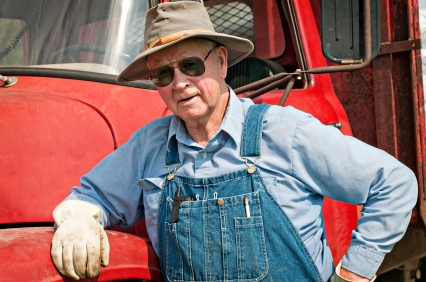According to an August 2012 survey of the Pew Internet & American Life Project, 85% of American adults use the internet.
• 91% of these internet users use a search engine to find information.
• 80% look for health and/or medical information.
• 78% look for information about a service or product they are thinking of buying.
• 66% use social networking sites like Facebook, LinkedIn or Google Plus.
The predominant age group for family caregivers or caregiving candidates, adults ages 50 to 64, increased their use of social networking sites by 454% from 2008 to 2012, according to data from the Pew Internet Project. That is a staggering number!
It turns out that caregivers are more likely than non-caregivers to turn to friends online for health information.
“We call it peer-to-peer health care — they triage with their peers and friends online, rather than going to medical sites,” said Susannah Fox, an associate director of Pew Internet Project, in an interview with The New York Times.
A study conducted by research and consulting firms Age Lessons and comScore found that caregivers spend 150 minutes per month on social media sites. Caregivers also tend to explore more online than others, reading 70% more web site pages.
Why are caregivers turning the internet in droves?
1) Staying connected. Caregiving is so time-consuming that people often find themselves isolated and disconnected from even their closest friends. Social networking sites can help a caregiver maintain their relationships with their family and friends, while forging new alliances with their peers who are taking care of elderly loved ones of their own.
2) Research. Caregivers are much more likely than the average person to research medical terms, support groups and information online.
3) Asking for help. Getting announcements and news and calls to action out quickly and efficiently. If someone needs advice or help, posting a quick request on Facebook or Twitter will yield immediate responses.
4) Celebration of a life. Social media also offer opportunities to commemorate the life of a senior who has passed on. Many people share pictures and memories of an elderly loved one via e-mail or Facebook post after they have died. Facebook also allows you to memorialize a person’s profile page.
Are you ready to engage these caregivers?
It is important to understand that caregivers are online for the reasons listed above – NOT to be sold a product or service.
However, senior care businesses and providers can position themselves online by providing valuable information that caregivers are searching for.
Our suggestions for getting in front of caregivers where they already are (online):
• Commit the resources to social media monitoring and maintenance. Using most of the most popular social networking sites is free, but the time to do so effectively is not. Manage and allot your time and resources appropriately.
• Write a blog. Blogs are the best way to increase your SEO (Search Engine Optimization). Develop an editorial calendar with ideas for future blog posts. As youself the following questions: How do you want to position yourself in your field? What are you an expert on? What are people searching for – who do you want to find you? What actions do you want to spur from your blog?
• Create great content and provide value. Much easier said than done! But ultimately social media is about delivering value to people – it’s not about selling your products and services. The companies that use social media effectively have followers because they deliver information that is useful and they minimize (if not completely eliminate) the sales pitches.
• Build trust. Why are you the best place to go to for this information? Why should people trust you? With trust comes followers… and with followers comes potential customers.
• Provide immediate support. Answer questions, be accessible and always respond to comments on your blog posts, Facebook page and any other social networking sites you maintain.
• Make sure your website is up-to-date and “ready for prime time”. If you are using social media to drive people to your website to learn more about your business, then make sure what they are seeing is visually appealing, clear and concise. What do you want them to do when they get to your website? Download a white paper? Join your email list? Attend an event? You have a 2 second window to capture the attention of a website visitor – is your website doing that now?
There are many ways to successfully engage caregivers and grow your business using online tools. However, these tools require a commitment of time and patience.
Don’t get discouraged, and look to the experts if you need professional help.
As a thank you for taking part in our survey, MDS would like to enter you in a drawing for a free book give away. The book entitled “Independent Living and CCRCs; Survival, Success & Strategies for Not-For-Profits Sponsors and For-Profit Owner/Operators” written by Jim Moore, President of Moore Diversified Services. Jim’s 40 years of experience in the senior living industry make this a must read! To enter the drawing all you need to do is leave a comment on the blog (see link at top of this post). If you haven’t already, I would invite you to connect with MDS on LinkedIn at http://www.linkedin.com/in/roydbarkeriii. Also “Like” us on FB at www.facebook.com/moorediversifiedservices and follow us on Twitter @MDSseniorliving.
About the author:
This content was provided courtesy of guest blogger Julia Campbell, founder and president of J Campbell Social Marketing, an interactive marketing communications agency. Julia, in conjunction with MDS, is writing a multi-part series on Social Media for senior living, housing and health care providers. She will address ways the industry can use social media and online tools to grow their business and stay in touch with their customers, residents and families.
Julia has been featured on Social Media Today, Business 2 Community, Forbes and The Glass Heel.
SPECIAL LIMITED TIME DEAL: MDS in conjunction with J Campbell Social Marketing is excited to provide an in-depth Social Media and Digital Marketing Evaluation Package tailored especially for the senior housing industry. For a limited time, this customized Social Media and Digital Marketing Evaluation Package (valued at over $600) is being offered for the preferred rate of $350 when booked through MDS. Contact Roy Barker at MDS today to take advantage of this tremendous offer and put this team to work improving your social media program.
Roy Barker, Director- Special Projects
RoyBarker@m-d-s.com
Direct Line: 817-925-8374
 residents, you are their family and you will make their holidays bright!
residents, you are their family and you will make their holidays bright!












